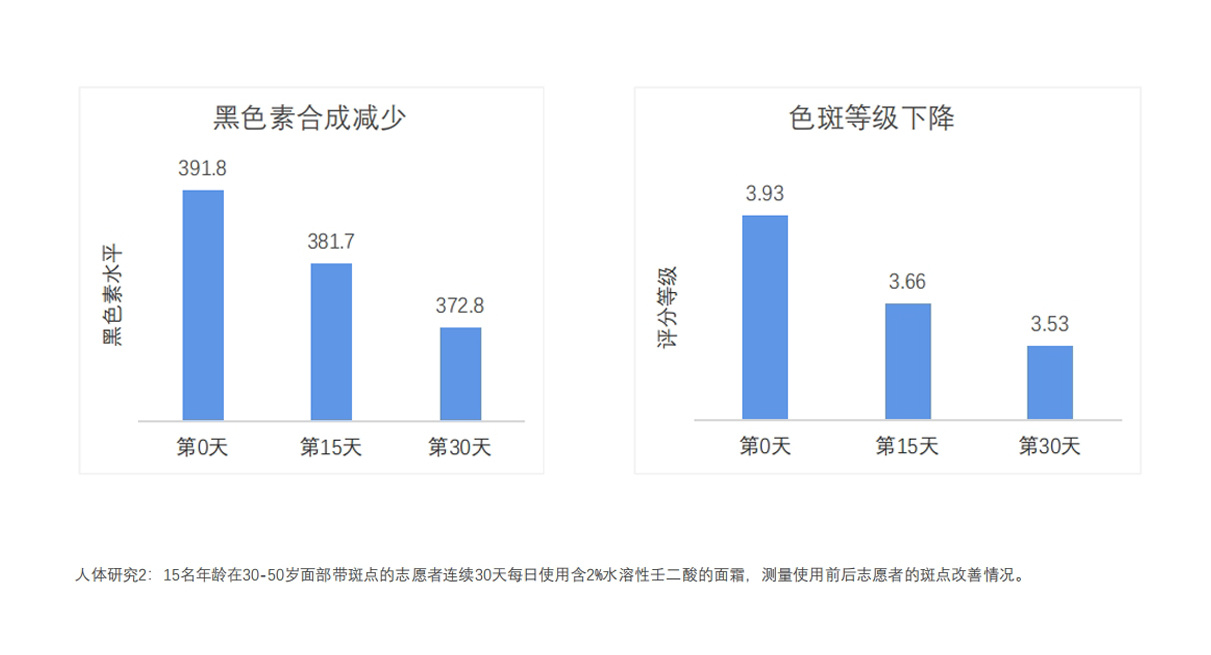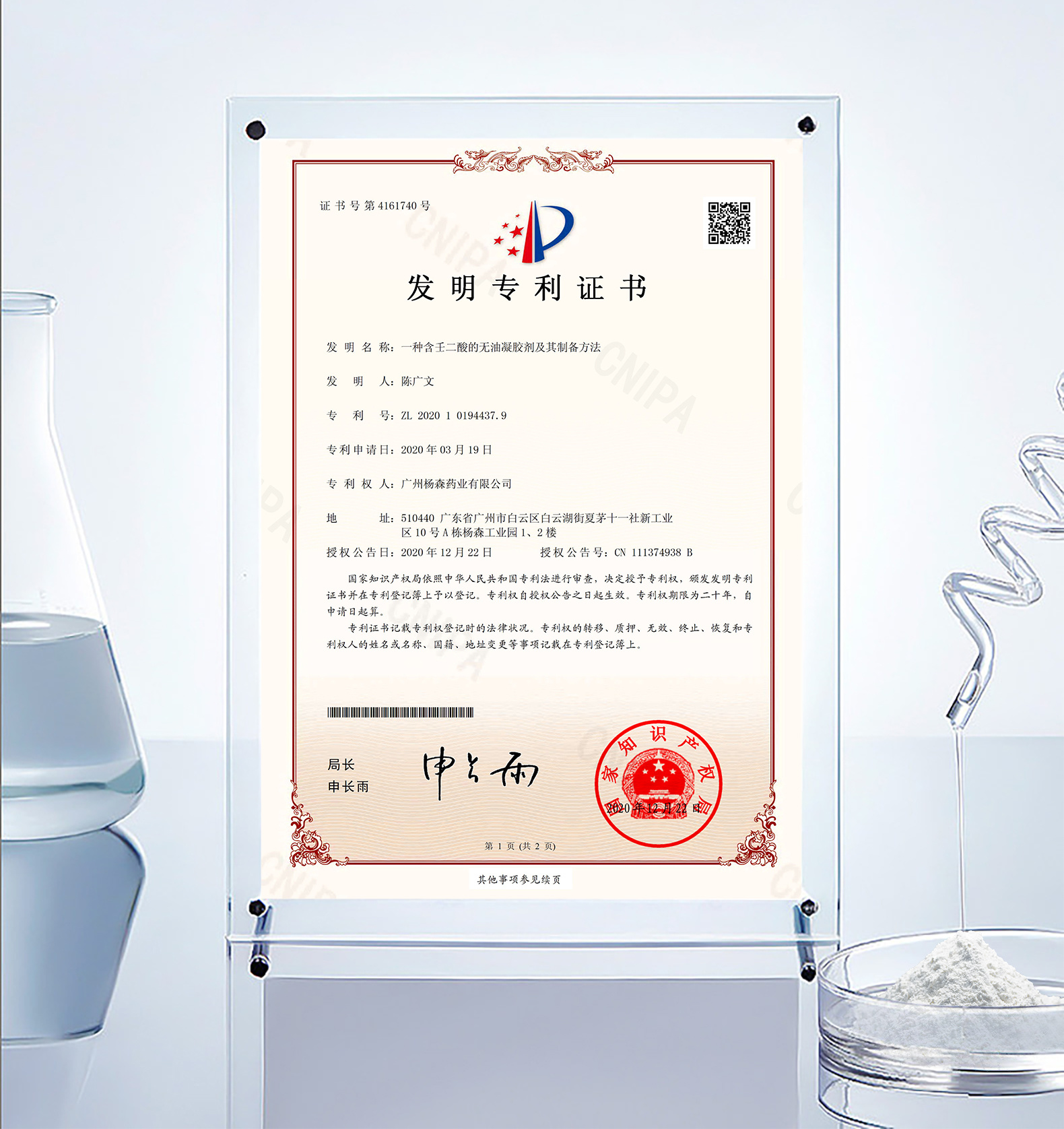
Ingredient Story - The Discovery of Azelaic Acid: From Skin Enigma to Skincare Star
Release time:2025-03-04
The Discovery Story of Azelaic Acid
———— Transformation from a Skin Enigma to a Skincare Star
In today's “gold list” of skincare ingredients, azelaic acid has attracted much attention for its versatility—it can control oil and treat acne, whiten and fade spots, and is even called an “acne nemesis”. However, few people know that the discovery of this ingredient stemmed from an accidental exploration of skin problems. Its birth unveiled a wonderful chapter in the interaction between microorganisms and human skin.
Accidental Discovery: The Skin's " Fading Enigma ”
In the 1970s, Dr. Marcella at a renowned dermatological institute in Rome observed a peculiar phenomenon in clinical practice: in people with darker skin tones, the affected areas of tinea versicolor (commonly known as pityriasis versicolor) showed obvious hypopigmentation patches. This phenomenon piqued her curiosity: why would a fungal infection cause skin “fading”?

Subsequent research found that the culprit of tinea versicolor, Malassezia, when metabolizing unsaturated fatty acids in sebum, oxidizes them into saturated dicarboxylic acids. These dicarboxylic acids act like invisible “signal jammers”, inhibiting tyrosinase activity in melanocytes—the key enzyme in skin pigment production.
Scientific Revelation: Malassezia's " Metabolic Trap ”
The research team further analyzed that among the many dicarboxylic acids produced by Malassezia metabolism, a component called azelaic acid (molecular formula C9H16O4) showed a particularly prominent ability to inhibit tyrosinase. Using techniques such as mass spectrometry, scientists confirmed for the first time the structure of this naturally occurring nonacarbon dicarboxylic acid and revealed its direct link to skin pigment regulation.
“Malassezia intended to ‘expand its territory’ on the skin, but unexpectedly created a natural weapon against pigment.” This dramatic discovery transformed azelaic acid from a byproduct of pathogenic bacteria into a treasure trove ingredient for skincare.

Skincare Revolution: Azelaic Acid's Multi-Dimensional Power
As research deepened, the efficacy boundaries of azelaic acid continued to expand. Its mechanism of action is like a “smart key”, precisely targeting multiple fundamental aspects of acne:
1. Oil Control and Acne Suppression
Inhibition of 5α- reductase activity: reduces excessive secretion of sebaceous glands, controlling " oiliness ”;
from the source; regulates keratin metabolism: gently unclogs pores, preventing the formation of closed comedones;
Antibacterial Defense: Interferes with the DNA synthesis of acne-causing Propionibacterium acnes, disrupting the acne-causing bacteria.
2. Redness Reduction and Anti-inflammation
By downregulating NF-κB (the core inflammatory signaling pathway) expression, it quickly alleviates red and swollen acne;
neutralizes free radicals, reducing inflammatory damage caused by oxidative stress.
3. Whitening and Fading Marks
Continuously inhibits tyrosinase activity, reducing melanin synthesis;
accelerates the metabolism of residual pigments from acne marks, achieving even skin tone.

A Double Blessing from Nature and Science
Unlike chemically synthesized potent ingredients, azelaic acid possesses both the safety of natural origin and precise efficacy. Today, it has been approved by global drug regulatory agencies for acne treatment (such as 15%-20% concentration gel), and is also incorporated into daily skincare products at lower concentrations (below 10%), becoming a ‘savior ingredient’ for people with oily and sensitive skin and acne-prone skin.
In view of the research and practical application of azelaic acid, Guangzhou Yangsen Pharmaceutical Co., Ltd.'s independently developed “An oil-free azelaic acid-containing gel and its preparation method” has been granted a national invention patent (Patent No.: ZL202010194437.9). This patent solves the problem of poor compatibility of azelaic acid by adding specific raw materials. After use, the skin feels moist and soft, and it has significant efficacy in treating acne and rejuvenating the skin. It can be widely used in functional skincare products!

“This story tells us that the key to solving problems is often hidden in nature’s most challenging puzzles.” Just as Dr. Marcella’s accidental discovery, the rise of azelaic acid demonstrates the charm of scientific exploration—from the microscopic battlefield of skin problems to the dressing tables of billions of people, the collision of science and nature continues to write new possibilities.
(Kindly Note: The mechanisms and data described in this article are based on publicly published scientific research. For specific product usage, please follow professional guidance; this article introduces the efficacy of the raw material. In practical application, the product shall be subject to the filing and efficacy report, and the description of efficacy shall comply with the regulations on cosmetics supervision.)
Related Blog



